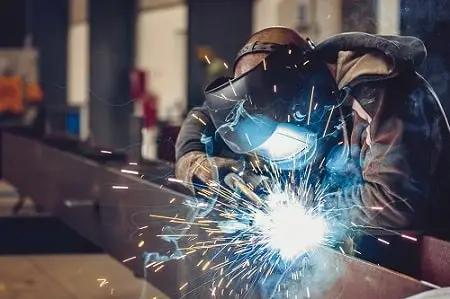There are different types of welding lead methods for different materials and purposes. It is a very intensive and complex procedure. that requires established Standard Operating Procedures (SOPs) to be fully executed. Welding lead products are slightly different, and existing lead-burning techniques can be improved to ensure better welding.
Right Welding Torch
Generally, the ideal welding torch size for burning lead is too small. Flame release valves are placed at the forward end of the handles. This makes the lead welding process easier for the person managing it. Torch tips are available in a variety of sizes, and depending on the mass of the lead, the user can choose the tips that work best for their situation. Using larger-size tips on smaller metals can be harsh on the lead and may not result in quality welding.
A common welding error is an insufficient supply of fuel or gas to the tip. Limiting the amount of gas or fuel will result in a backfire, creating a dangerous situation for welders. Also, welders tend to underestimate the specifics of the gas required to use a particular type of tip. Drawing gas for a large welding torch tip from small cylinders to burn lead can cause the aforementioned complications.
Right Welding Rods
For successful welding of metals, knowledge of the sound of the base metal can aid in matching both the base metal and the electrode. In principle and in practice, these two should be practically the same for good welding. Numerous charts correspond to base metal and electrode composition, and it may be useful to refer to them before starting the welding process. The same applies to the strength of the metal.
Additionally, the welding current and metal dimensions also determine how successful the lead burn will be for the welding process. Now that the welder has chosen the electrodes, he needs to connect them to the power supply. Different welding rods require alternating current (AC) or direct current (DC). Connecting the rod to the wrong power supply can damage the rods and render them useless for future use.
The dimensions of the metal also affect the welding process. For larger and thicker metals, electrodes with low hydrogen consumption and malleable metals are best for the welding process. For example, E708 electrodes are used to handle structural metals, which are one of the popular types of thick and dense metals.
E7018, E6013, and Forney 3125 E6011 are commonly used for welding thin metals such as lead linings for walls. These welding electrodes offer greater control over the metal as there is no unnecessary application of force to the metal.
Positions
The welding method will determine the positioning of the metal during the welding procedure. This, in turn, determines the type of wand used and the resources it requires. There are four basic welding positions: flat, horizontal, vertical, and overhead.
The flat welding position requires the welder to hold the metal in a position where the forces of gravity are in its favor while forming the lead. Almost all metals can be welded in this position, and it is very easy to accomplish because it maintains the positioning of the metal without requiring any additional manpower to hold the metal in place. On the other hand, horizontal positioning can cause the material to tip and the welder may need to be mindful of the direction in which the swing is going. Both of these positionings can be used in almost all welding procedures.
A vertical welding position is used for larger-width metals. However, the welder will need to change the welding rods and tips to get the most out of this positioning. The product design will be continuously monitored to ensure its suitability for this process. Vertical welding requires the welder to work from a good position to achieve the best results. An overhead welding position is required when an object is placed overhead. It is very important to maintain a cooling temperature so that the welder does not suffer burns due to dripping puddles.
Metal positioning also affects the gases used. Oxyacetylene, oxyhydrogen, and oxygen natural gas can be used in all situations. An exception is placed on oxygen natural gas, which cannot be used for overhead welding positions for safety purposes.
The Process
The flame produced by the welding torch can affect metals in different ways. Ideally, the flame should be neutral because oxidizing flames will cause even fusion under the metal while reducing the flame will leave soot marks that will show during the cooling process.
Result
Welding as a procedure is quite intensive and technical, and inadequate welding can endanger the safety of the user and the quality of the welded product. For this reason, following standard procedures in setup results in well-welded products that serve their purpose without compromising quality. Visit Canada Metals to learn more about different welding procedures for different metals and our welding lead repair services.


